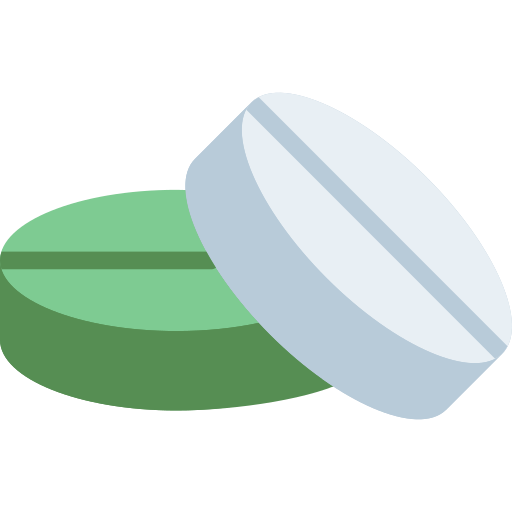
Product Details
Description
Zafirlukast may be administered with other therapies routinely used in the management of asthma and allergy. Inhaled steroids, inhaled and oral bronchodilator therapy, antibiotics and antihistamines are examples of agents which have been co-administered with Zafirlukast without adverse interaction. Zafirlukast may be administered with oral contraceptives without adverse interaction. Co-administration with Warfarin results in an increase in maximum prothrombin time by approximately 35%. It is therefore recommended that if Zafirlukast is co-administered with Warfarin, prothrombin time should be closely monitored. The interaction is probably due to an inhibition by Zafirlukast of the cytochrome P450 2C9 enzyme system. In clinical trials co-administration with Theophylline resulted in decreased plasma levels of Zafirlukast, by approximately 30%, but with no effect on plasma Theophylline levels. However, during postmarketing surveillance, there have been rare cases of patients experiencing increased Theophylline levels when co-administered with Zafirlukast. Co-administration with Terfenadine resulted in a 54% decrease in AUC for Zafirlukast, but with no effect on plasma Terfenadine levels. Coadministration with Acetylsalicylic acid (650 mg four times a day) may result in increased plasma levels of Zafirlukast, by approximately 45%. Co-administration with Erythromycin will result in decreased plasma levels of Zafirlukast, by approximately 40%. The clearance of Zafirlukast in smokers may be increased by approximately 20%
Effect on ability to drive or operate machinery: There is no evidence that Zafirlukast affects the ability to drive and use machinery. Administration of Zafirlukast in clinical trials against placebo has been associated with headache (9.9% vs. 9.0%) or gastrointestinal disturbance (nausea 2.6% vs. 2.2%, vomiting 1.2% vs. 1.0%, diarrhoea 2.3% vs. 1.8%, abdominal pain 1.6% vs. 1.2%). These symptoms are usually mild and do not necessitate withdrawal from therapy. During post-marketing experience, bruising, bleeding disorders, including menorrhagia (rare), thrombocytopaenia and agranulocytosis (very rare) have also been reported. Hypersensitivity reactions, including urticaria and angio-oedema have been reported. Rashes, including blistering, have also been reported. The above events have usually resolved during continued treatment or following cessation of therapy. Infrequently, elevated serum transaminase levels have been observed in clinical trials against placebo with Zafirlukast (increased AST 1.0% vs. 0.9%, increased AST 0.6% vs. 0.6%); at recommended doses the incidence was equivalent to placebo. Rarely the transaminase profile has been consistent with drug-induced hepatitis, which resolved following cessation of Zafirlukast therapy. During post-marketing experience there have been rare reports of hepatitis, with or without elevated bilirubin levels. These cases were usually reversible. In placebo controlled clinical trials, an increased incidence of infection has been observed in elderly patients given Zafirlukast (7.8% vs. 1.4%). Infections were usually mild, predominantly affecting the respiratory tract.
Pregnancy: The safety of Zafirlukast in human pregnancy has not been established. In animal studies, Zafirlukast did not have any apparent effect on fertility and did not appear to have any teratogenic or selective toxic effect on the foetus. The potential risks should be weighed against the benefits of continuing therapy during pregnancy and Zafirlukast should be used during pregnancy only if clearly needed. Lactation: Zafirlukast is excreted in human breast milk. Zafirlukast should not be administered to nursing mothers.
Zafirlukast should be taken regularly to achieve benefit, even during symptom free periods. Zafirlukast therapy should normally be continued during acute exacerbations of asthma. Zafirlukast does not allow a reduction in existing steroid treatment. As with inhaled steroids and hormones (disodium cromoglycate, nedocromil sodium), Zafirlukast is not indicated for use in the reversal of bronchospasm in acute asthma attacks. Zafirlukast has not been evaluated in the treatment of labile (brittle) or unstable asthma. Cases of Churg Strauss syndrome have been reported in association with Zafirlukast usage. A causal relationship has neither been confirmed nor refuted. If a patient develops a Churg Strauss syndrome type illness, Zafirlukast should be stopped, a re-challenge test should not be performed and treatment should not be restarted. Elevations in serum transaminases can occur during treatment with Zafirlukast. These are usually asymptomatic and transient but could represent early evidence of hepatotoxicity. If clinical symptoms or signs suggestive of liver dysfunction occur (e.g., nausea, vomiting, right upper quadrant pain, fatigue, lethargy, flu-like symptoms, enlarged liver, pruritus and jaundice), the serum transaminases, in particular serum ALT, should be measured and the patient managed accordingly. A decision to discontinue Zafirlukast should be individualized to the patient’s condition, weighing the risk of hepatic dysfunction against the clinical benefit of Zafirlukast to the patient.
Leukotriene receptor antagonists
Store between 20-25° C. Protect from light and moisture.
-
Support 24/7
Call us anytime -
100% Safety
Only secure payments